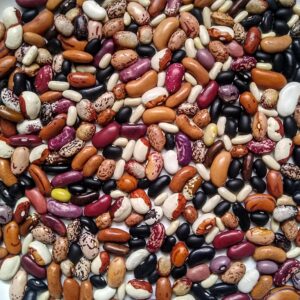
It’s been a busy couple of weeks for OSA on a Southwest Seed Tour, with four events taking us from Santa Fe, NM to the Boulder, CO area. Over the next week I’ll post several updates on these events.
The first stop along the way was the International Federation of Organic Agriculture Movements (IFOAM) conference on
organic breeding. Three OSA staff were involved in discussions with a very diverse group of participants. Plant breeders from Iran, the Philippines, Korea, Agrican and European nations, and the Americas met to share their approach to breeding for organic systems, discuss concerns related to the development of plant and animal genetic resources, and promote biodiversity and social justice in breeding systems.
OSA’s Education and Research Director, Micaela Colley, co-chaired a session on “Evolutionary Breeding” that included a presentation from our Senior Plant Breeder – Dr. John Navazio. John presented OSA’s approach to breeding for heterogeneous environments – farming systems that wide ranging variability in conditions including disease and pest pressure, fertility, and climatic conditions. The conventional breeding approach of selecting for very narrow uniformity does not work well in these variable environments, and so OSA’s approach is to breed for elasticity, resilience, and responsiveness to variability while still maintaining “relative” uniformity. John gave a great example of this work with a drought tolerant zucchini with deep roots to scavenge nutrients and a morphological structure that is resistant to the impact of high winds.
OSA’s Director of Advocacy, Matthew Dillon, presented on Protoplast Fusion techniques in organic breeding. A group of European plant breeders (
Eco-PB) recently published a
report calling for a ban on protoplast fusion based on their definition of it as a form of genetic engineering, and asked for a US response to this.
Protoplast fusion is technique used by vegetable breeders to create male sterile inbred lines that are used in the creation of hybrids, predominantly in brocolli, cauliflower, cabbage, and chicories. For example: a radish cell and a cabbage cell are placed in a petri dish. Both cell walls are desolved. The cells fuse and the desirable mitochondrial DNA from the radish which contains thetrait of “male sterility” is transferred to the cabbage. Cell walls are regrown and a plant is grown from tissue culture. This is gene transfer that cannot occur in nature, but because the plants are in the same botanical/taxonomic family it is not considered genetic engineering by European Rules. (The
US definition applies only to recombinant DNA).
The fact that this form of gene transfer does not occur in nature is enough to make it an unacceptable technique from the OSA perspective. Additionally, we oppose this breeding technique because it is an evolutionary dead-end. Plant breeders often save seed from other breeders hybrid materials to develop new breeding populations. The protoplast fusion technique results in plants that cannot viably transfer their genetics to the next generation. This is built-in Intellectual Property protection for these companies, even more solid than a patent in that its biologically impossible to use the genetics. We oppose any technique or legal framework that prevents the further of plant genetic diversity and future breeding potential.
It was a great session brainstorming with our European colleagues on how to better address this issue, as seed produced using this technique is currently allowed in organic systems. We’ll share a more detailed plan on how to address this and be taking it up in discussion with our Organic Seed Working Group.
Look for more updates on our Southwest Seed Tour next week.
Below, researcher at the IFOAM conference who are past OFRF grant recipients. Photo by Jane Soobey, OFRF>
L-R: Michael Mazurek, Cornell; Frank Kutka, NDSU; MIguel Altieri, UC Berkeley; Matthew Dillon, OSA; Walter Goldstein, Michael Fields Institute; Charles Martin, New Mexico State

